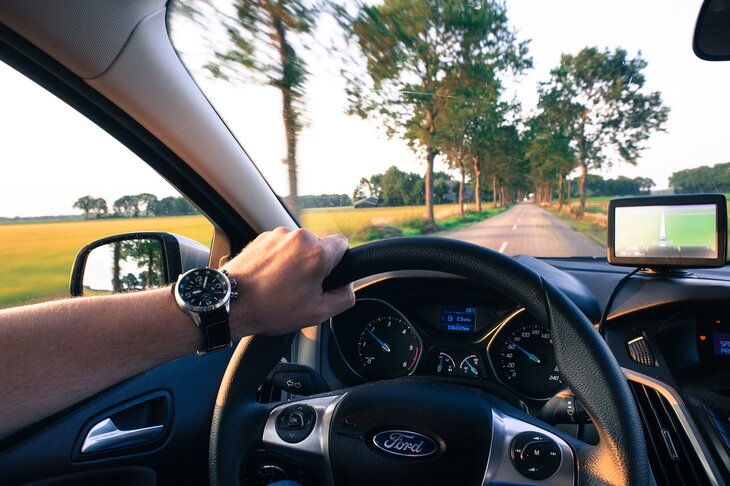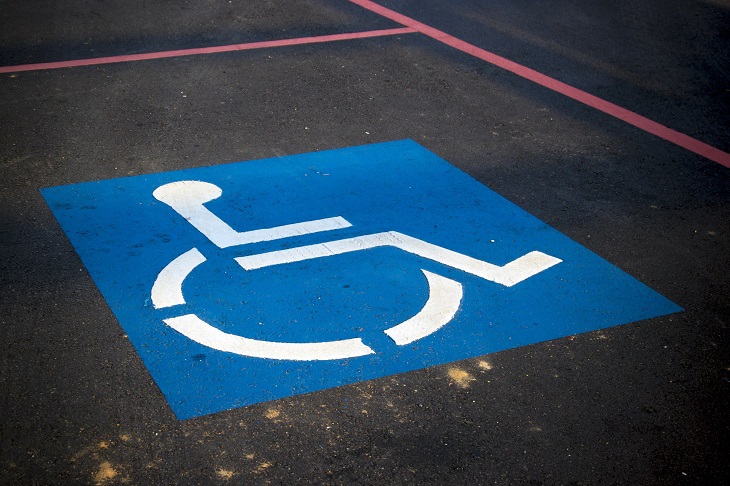Driving is more than just a means of getting from point A to point B; it symbolizes freedom, autonomy, and independence. Driving with a disability can be challenging for some people, but it is also a lifeline that allows them to participate fully in society. Accessible driving opens doors to employment opportunities, social engagements, and the simple joy of exploring the world.
In recent years, advancements in technology and increased awareness have made driving accessible to a broader range of people, breaking down barriers that once seemed impossible. In this blog, we aim to demystify the process of driving with a disability, from understanding legal requirements and adaptive equipment to exploring handicap placard permits and insurance options.
Whether you are new to driving with a disability or looking for advanced solutions, this blog covers every aspect of accessible driving, ensuring you have the information and encouragement needed to hit the road safely and confidently. We hope you find practical advice, inspiration, and support to help you overcome any obstacles on your journey toward becoming a confident driver.
Understanding Disability and Driving
Defining Disability in the Context of Driving
Driving with a disability involves a wide range of physical, sensory, and cognitive impairments. It could mean limited mobility, vision impairments, hearing loss, or cognitive challenges.
The key is understanding how these conditions impact your ability to operate a vehicle safely. Each person’s experience is unique, and the solutions are as diverse as people and their particular issues.
Types of Disabilities that May Affect Driving
Many different types of disabilities might affect driving capacity. Among those, you can find many types, including:
Physical Conditions:
- Spinal cord injuries
- Amputations
- Muscular dystrophy
- Paralysis
- Arthritis
Sensory Conditions:
- Reduced vision
- Deafness
- Vestibular disorders
Cognitive Conditions:
- Autism
- Traumatic brain injuries
- Alzheimer’s disease
Neurological Conditions:
- Epilepsy
- Parkinson’s disease
- Multiple sclerosis
Recognizing these challenges is the first step in finding the right solutions to safe driving.
Breaking Barriers: A New Era of Independence
The good news is, that the landscape of accessible driving has evolved dramatically. Gone are the days when a disability meant an end to driving dreams and the freedom and independence everyone craves.
Today, with adaptive equipment and supportive policies, more individuals with disabilities are hitting the road with confidence. This new era is not just about getting behind the wheel; it’s about reclaiming autonomy and embracing life’s adventures.
Legal Requirements and Licensing
Licensing for Drivers with Disabilities
Obtaining a driver’s license with a disability requires understanding the specific legal requirements in your region. Many places have specialized licensing processes, including medical evaluations and adaptive equipment testing. Make sure you know your state’s rules and regulations to make sure you’re fully compliant.
Medical Assessments and Driving Eligibility
Medical assessments are often a prerequisite for licensing. These evaluations determine if a person can drive safely and if any accommodations are necessary.
The process may involve a detailed examination by a medical professional specializing in evaluating driving capabilities. This step is vital in establishing that all drivers, regardless of ability, are safe on the road.
Special Considerations for Teen Drivers with Disabilities
Teen drivers with disabilities face unique problems. In addition to the typical anxieties of new drivers, they must handle the complexities of adaptive equipment and possibly more rigid licensing requirements. Parental support and proper training are essential to foster confidence and competence behind the wheel.
Adaptive Driving Equipment
Introduction to Adaptive Driving Aids
Adaptive driving aids are specialized devices that make driving possible for people with disabilities. These aids range from simple modifications, like steering wheel knobs, to more complex systems, such as hand controls and wheelchair lifts. The goal is to tailor the driving experience to the person’s needs, providing both safety and comfort.
Hand Controls: A Game-Changer for Many
Hand controls are one of the most common adaptations for drivers with limited or no use of their legs. These devices allow drivers to control the vehicle’s acceleration and braking using hand-operated levers. You can find them in various styles and configurations, depending on your preferences and physical abilities.
Wheelchair-Accessible Vehicles: Options and Customizations
Wheelchair-accessible vehicles (WAVs) are specially designed or modified to accommodate wheelchairs. Oftentimes, these vehicles feature lowered floors, ramps or lifts, and specialized seating arrangements. The customization options are wide, allowing drivers to choose the setup that best suits their lifestyle and mobility needs.
Assistive Technology: From Spinner Knobs to Joysticks
Assistive technology in vehicles has come a long way. Spinner knobs make steering easier for those with limited hand strength, while joystick controls offer an alternative to traditional steering for those with more severe physical limitations. These technologies are continually evolving, providing more options for drivers with diverse needs.

Choosing the Right Vehicle for Disability Driving
Considerations for Selecting a Vehicle
Selecting the right vehicle involves more than just picking a make and model. For drivers with disabilities, factors like ease of entry and exit, visibility, and adaptability are paramount. It’s essential to consider the specific needs and preferences of the driver, as well as the type of adaptive equipment required.
Top Vehicle Models for Drivers with Disabilities
Certain vehicle models are particularly well-suited for drivers with disabilities. Minivans, SUVs, and certain sedans are popular due to their spacious interiors and adaptability. Brands like Toyota, Honda, and Ford offer models with features that cater to accessibility needs, making them favorites among disabled drivers.
Customizing Your Car for Comfort and Safety
Customization goes beyond installing adaptive equipment. It includes adjusting seats, mirrors, and controls to ensure maximum comfort and safety. Features like power seats, extended mirrors, and additional safety systems can make a significant difference in the driving experience.
Training and Rehabilitation for Disability Driving
The Role of Driver Rehabilitation Specialists
Driver rehabilitation specialists are paramount in helping people with disabilities learn to drive. These professionals assess the driver’s abilities, recommend appropriate adaptive equipment, and provide specialized training. They are key partners in the journey toward independent driving.
Driving Schools for People with Disabilities
Driving schools specializing in training persons with disabilities offer tailored lessons that address specific needs. Frequently, these schools have vehicles equipped with various adaptive devices, allowing students to practice using the equipment they will rely on in their cars.
Importance of Adaptive Driving Lessons
Adaptive driving lessons are essential for new drivers and those who need to adjust to new adaptive equipment. These lessons provide hands-on experience and build confidence, making drivers comfortable and competent in operating their vehicles, as well as providing the necessary elements and knowledge to be safe on the road.
Understanding the Handicap Permit
Obtaining a handicap permit is crucial for drivers with disabilities, as it grants access to designated parking spaces and other accommodations that enhance mobility. This permit is essential for ensuring that drivers and passengers with disabilities can navigate public spaces with ease.
Medical Certification Requirements
The application process for a handicap permit varies by region but typically begins with obtaining a medical certification. This certification must come from a licensed healthcare provider and confirm that the applicant has a qualifying disability, such as mobility impairments, vision loss, or a chronic illness that affects their ability to walk. This step is vital in verifying the need for special parking accommodations.
Application Process and Documentation
Once the medical certification is secured, individuals can proceed with the application by submitting it to their local Department of Motor Vehicles (DMV) or relevant authority. The process generally involves filling out necessary forms, providing identification, and sometimes paying a small fee. It’s important to confirm all documentation is accurate and complete to avoid any delays.
Receiving and Using Your Handicap Permit
Upon approval, applicants will receive a placard or special license plate. This permit must be prominently displayed in the vehicle when using designated parking spaces. It’s a straightforward yet vital step in verifying that people with disabilities have the necessary accommodations to improve their mobility and access public spaces. Dr. Handicap will provide you with detailed information on the application process, offering tips and guidance to simplify the experience and guarantee compliance with local regulations.

Financial Assistance and Funding Options
Government Grants and Programs
Various government grants and programs are available to help those with disabilities cover the costs of adaptive equipment and vehicle modifications. These programs vary by region, but they often provide significant financial support to make driving more accessible.
Non-Profit Organizations and Charities
Many non-profit organizations and charities offer financial assistance, advocacy, and support for drivers with disabilities. These organizations can provide valuable resources and connect individuals with the help they need to achieve their driving goals.
Insurance Coverage and Payment Plans
Insurance coverage for adaptive equipment and vehicle modifications can vary widely. It’s essential to work with an insurance provider who understands the unique needs of drivers with disabilities. Payment plans and financing options are also available to make adaptive driving more affordable.
Insurance Considerations for Driving with a Disability
Understanding Insurance for Disabled Drivers
Insurance for drivers with disabilities may have specific considerations, such as coverage for adaptive equipment and modifications. It pays to understand the policy’s details and check that all necessary aspects are covered.
Tips for Finding the Best Insurance Policy for Accessible Driving
Finding the right insurance policy involves comparing different providers, understanding the terms and conditions, and knowing what coverage is essential. Working with an insurance broker who specializes in policies for disabled drivers can be particularly helpful.
What to Do After an Accident
Accidents can be particularly challenging for drivers with disabilities. It’s important to know the steps to take, including reporting the incident, seeking medical attention, and dealing with insurance claims. Having a plan in place can make the process less stressful.
Disability Driving: Maintaining Your Independence
Road Trips Tips for Accessible Driving
For road trips, it’s vital to plan your route meticulously, considering accessible rest stops, accommodations, and attractions. Start by mapping out accessible gas stations and restaurants, and use apps that provide information on accessible facilities along your route.
Verify your vehicle is in top condition, and double-check that all adaptive equipment is functioning correctly. Packing an emergency kit with medical supplies, a spare tire, and tools can also be a lifesaver.
Tips for Staying Independent Behind the Wheel
- Be informed about the latest advancements in adaptive driving technologies. Regularly updating your knowledge helps you have the most efficient and safe equipment available.
- Engaging with communities and support networks can provide valuable insights and recommendations for new devices or techniques that enhance your driving experience.
- Routine self-assessments of your physical and cognitive abilities are also important. Consider scheduling regular check-ups with a healthcare professional to evaluate your driving capabilities and recommend adjustments.
- Participate in refresher driving courses, which can help you stay sharp and updated on current road laws and safe driving practices.
- Having a reliable vehicle is another key factor in maintaining independence. State that your car is regularly serviced and that all adaptive equipment is in optimal working condition.
- Have a backup plan, such as access to accessible public transportation or ride-sharing services, in case your vehicle becomes unavailable.
Disability Driving Community and Support Networks
Finding Support Groups and Communities
Support groups and communities offer invaluable resources, advice, and camaraderie for drivers with disabilities. These networks provide a space to share experiences, seek guidance, and find encouragement.
The Importance of a Strong Support System
A strong support system is crucial for drivers with disabilities. Family, friends, and professional networks can offer emotional support, practical assistance, and encouragement, making the journey toward independent driving smoother and more enjoyable.
Embracing the Journey of Accessible Driving
Driving with a disability is more than just a practical necessity; it’s a journey toward independence and empowerment. It’s about breaking down barriers and proving that anyone can enjoy the freedom of the open road, regardless of physical limitations.
For aspiring drivers with disabilities, the road ahead may seem intimidating, but it’s filled with possibilities. With the right support, resources, and determination, achieving the dream of driving is within reach. Embrace the journey, and let the road lead you to newfound freedom and independence.
Need more information on disabled parking in the US? We offer a useful bank of detailed topics on the Dr Handicap blog. Check it out today!

